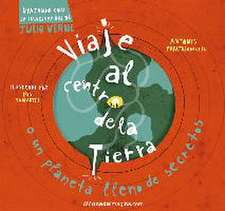Modeling Remaining Useful Life Dynamics in Reliability Engineering
Autor Pierre Dersinen Limba Engleză Hardback – 6 iun 2023
The book ends with suggestions for future research, including links with machine learning and deep learning.
The theory is illustrated by industrial examples. Each chapter is followed by a series of exercises.
FEATURES
- Provides both practical and theoretical background of RUL
- Describes how the uncertainty of RUL can be related to RUL loss rate
- Provides new insights into time-to-failure distributions
- Offers tools for predictive maintenance
Preț: 613.27 lei
Preț vechi: 673.93 lei
-9% Nou
Puncte Express: 920
Preț estimativ în valută:
117.36€ • 121.25$ • 97.62£
117.36€ • 121.25$ • 97.62£
Carte disponibilă
Livrare economică 26 februarie-12 martie
Livrare express 11-15 februarie pentru 33.17 lei
Preluare comenzi: 021 569.72.76
Specificații
ISBN-13: 9781032168593
ISBN-10: 1032168595
Pagini: 197
Ilustrații: 15 Tables, black and white; 60 Line drawings, black and white; 60 Illustrations, black and white
Dimensiuni: 152 x 229 x 17 mm
Greutate: 0.53 kg
Ediția:1
Editura: CRC Press
Colecția CRC Press
ISBN-10: 1032168595
Pagini: 197
Ilustrații: 15 Tables, black and white; 60 Line drawings, black and white; 60 Illustrations, black and white
Dimensiuni: 152 x 229 x 17 mm
Greutate: 0.53 kg
Ediția:1
Editura: CRC Press
Colecția CRC Press
Public țintă
PostgraduateNotă biografică
Pierre Dersin graduated from the Massachusetts Institute of Technology (MIT) with a Ph.D. in Electrical Engineering after receiving a Master’s degree in Operations Research also from MIT. He also holds math & E.E.degrees from Université Libre de Bruxelles ( Belgium).
Since 2019, he has been Adjunct Professor at Luleå University of Technology (Sweden) in the Operations & Maintenance Engineering Division.
In January 2022, he founded a small consulting company, Eumetry sas, in Louveciennes, France, in the fields of RAMS, PHM and AI, just after retiring from ALSTOM where he had spent more than 30 years.
With Alstom, he was RAM (Reliability-Availability-Maintainability) Director from 2007 to 2021 and founded the "RAM Center of Excellence".In 2015, he launched the predictive maintenance activity and became PHM (Prognostics & Health Management) Director of ALSTOM Digital Mobility, and then ALSTOM Digital & Integrated Systems, St-Ouen, France.
Prior to joining Alstom, he worked in the USA on the reliability of large electric power networks, as part of the Large Scale System Effectiveness Analysis Program sponsored by the US Department of Energy, from MIT and Systems Control, Inc, and later, with FABRICOM (Suez Group), on fault detection and diagnostics in industrial systems.
He has contributed a number of communications and publications in scientific conferences and journals in the fields of RAMS, PHM, AI, automatic control and electric power systems (including Engineering Applications of AI, IEEE Transactions on Automatic Control, IEEE Transactions on Power Apparatus & Systems, ESREL, RAMS Symposia, French Lambda-Mu Symposia, the 2012 IEEE-PHM Conference, the 2014 European Conference of the PHM Society ( keynote speaker) and WSC 2013).
He serves on the IEEE Reliability Society AdCom and the IEE Digital Reality Initiative,and chairs the IEEE Reliability Society Technical Committee on Systems of Systems. He is a contributor of four chapters in the "Handbook of RAMS in Railways: Theory & Practice" (CRC Press, Taylor & Francis),2018, including a chapter on "PHM in Railways ‘(Ch.6). In January 2020, he was awarded the Alan 0. Plait Award for the best tutorial at the RAMS conference, " Designing for Availability in Systems, and Systems of Systems".
His main research interests focus on the confluence between RAMS and PHM, as well as complex systems resilience and asset management.
Since 2019, he has been Adjunct Professor at Luleå University of Technology (Sweden) in the Operations & Maintenance Engineering Division.
In January 2022, he founded a small consulting company, Eumetry sas, in Louveciennes, France, in the fields of RAMS, PHM and AI, just after retiring from ALSTOM where he had spent more than 30 years.
With Alstom, he was RAM (Reliability-Availability-Maintainability) Director from 2007 to 2021 and founded the "RAM Center of Excellence".In 2015, he launched the predictive maintenance activity and became PHM (Prognostics & Health Management) Director of ALSTOM Digital Mobility, and then ALSTOM Digital & Integrated Systems, St-Ouen, France.
Prior to joining Alstom, he worked in the USA on the reliability of large electric power networks, as part of the Large Scale System Effectiveness Analysis Program sponsored by the US Department of Energy, from MIT and Systems Control, Inc, and later, with FABRICOM (Suez Group), on fault detection and diagnostics in industrial systems.
He has contributed a number of communications and publications in scientific conferences and journals in the fields of RAMS, PHM, AI, automatic control and electric power systems (including Engineering Applications of AI, IEEE Transactions on Automatic Control, IEEE Transactions on Power Apparatus & Systems, ESREL, RAMS Symposia, French Lambda-Mu Symposia, the 2012 IEEE-PHM Conference, the 2014 European Conference of the PHM Society ( keynote speaker) and WSC 2013).
He serves on the IEEE Reliability Society AdCom and the IEE Digital Reality Initiative,and chairs the IEEE Reliability Society Technical Committee on Systems of Systems. He is a contributor of four chapters in the "Handbook of RAMS in Railways: Theory & Practice" (CRC Press, Taylor & Francis),2018, including a chapter on "PHM in Railways ‘(Ch.6). In January 2020, he was awarded the Alan 0. Plait Award for the best tutorial at the RAMS conference, " Designing for Availability in Systems, and Systems of Systems".
His main research interests focus on the confluence between RAMS and PHM, as well as complex systems resilience and asset management.
Cuprins
1. Introduction, 2. Reminder of Reliability Engineering Fundamentals, 3. The RUL Loss Rate for a Special Class of Time-to-Failure Distributions: MRL Linear Function of Time, 4. Generalization to an MRL Piecewise-Linear Function of Time, 5. Generalization to a Wide Class of Lifetime Distributions, 6. Properties of the dg Metric, 7. Multiple Failure or Degradation Modes, 8. Statistical Estimation Aspects, 9. Implications for Maintenance Optimization, 10. Advanced Topics and Further Research
Recenzii
A Review of Modeling Remaining Useful Life Dynamics in Reliability Engineering
Pierre Dersin
CRC Press, 2023
In my opinion, this is a very important addition to our reliability engineering technology. It provides a comprehensive and definitive treatment of the modeling of remaining asset life. More significantly, the construction is new, insightful and broadly applicable. This book should become a part of every reliability engineer’s reference library.
The key and very significant contribution of the text is that the author shows that the remaining useful life of an asset can be modeled using a linear or a piecewise linear function of time or in some cases of a transformed time scale. The author specifically shows that this feature of the residual life occurs in all of the most commonly used probability models of life duration. He shows that the (piecewise) linear relationship occurs for exponential, uniform, Dirac, Weibull, Lognormal, Pareto and Gamma life distributions and also for gamma process and Weiner process degradation models. In each case, he shows the mapping from the life distribution parameters to the (piecewise) linear remaining life models. In addition, he constructs the time scale transform for those distributions where it is needed. The result is an analytical framework for obtaining a residual life measure that can be the basis for efficient maintenance planning – especially for predictive maintenance planning.
The text is well organized and provides complete explanations of the analytical details. The author starts with definitions of Remaining Useful Life (RUL), the Mean Residual Life (MRL) which is the expected value of the RUL and the “RUL loss rate” which is the derivative of the RUL and characterizes the ongoing evolution of the RUL. He then establishes the general relationship between the MRL and the reliability function. This relationship forms the basis for the RUL analyses that follow and these analyses are also substantial.
The continuing constructions, include the definition of confidence intervals for the RUL, the parametric definition of the linear time functions for the MRL, the coefficient of variation for the RUL and the determination of the relationship between the confidence interval for the RUL and the RUL Loss rate.
Following an excursion into moment generating functions and cumulative hazard functions, the author generalizes the previous results to MRL measures that are piecewise linear functions of time. Once this generalization is established, the author defines the non-linear time transformation that allows the MRL for most life distributions to be expressed as piecewise linear functions. He specifically shows the construction for several cases in which commonly used life distributions and also to degradation models.
The author devotes a complete chapter to the examination of the properties of the time transformation that allows for the linearization of the MRL based on so many commonly used life duration models. This assures that the reader has a full view of the power of the analysis that has been presented.
At this point, the analytical construction is really complete. Nevertheless, the author continues further to show the applicability of the method to cases of multiple failure modes and he then addresses statistical estimation methods. As part of this treatment, he explains the possibility of using Bayesian estimation strategies in the analysis.
He completes the text with a discussion of maintenance planning models and methods and with a suggestion of where ongoing research seems appropriate. These discussions are insightful and useful but in my view, the exciting feature of this text is that the treatment of RUL is so thorough that the results developed will support the formulation of predictive maintenance strategies. I think that every reliability engineer that is working with asset management questions should read this text and use it as a basis for using asset monitoring information to define efficient adaptive maintenance plans.
In closing, I suggest that this text will become one of the classic standard references for reliability engineers.
Joel A. Nachlas, Ph. D.
Pierre Dersin
CRC Press, 2023
In my opinion, this is a very important addition to our reliability engineering technology. It provides a comprehensive and definitive treatment of the modeling of remaining asset life. More significantly, the construction is new, insightful and broadly applicable. This book should become a part of every reliability engineer’s reference library.
The key and very significant contribution of the text is that the author shows that the remaining useful life of an asset can be modeled using a linear or a piecewise linear function of time or in some cases of a transformed time scale. The author specifically shows that this feature of the residual life occurs in all of the most commonly used probability models of life duration. He shows that the (piecewise) linear relationship occurs for exponential, uniform, Dirac, Weibull, Lognormal, Pareto and Gamma life distributions and also for gamma process and Weiner process degradation models. In each case, he shows the mapping from the life distribution parameters to the (piecewise) linear remaining life models. In addition, he constructs the time scale transform for those distributions where it is needed. The result is an analytical framework for obtaining a residual life measure that can be the basis for efficient maintenance planning – especially for predictive maintenance planning.
The text is well organized and provides complete explanations of the analytical details. The author starts with definitions of Remaining Useful Life (RUL), the Mean Residual Life (MRL) which is the expected value of the RUL and the “RUL loss rate” which is the derivative of the RUL and characterizes the ongoing evolution of the RUL. He then establishes the general relationship between the MRL and the reliability function. This relationship forms the basis for the RUL analyses that follow and these analyses are also substantial.
The continuing constructions, include the definition of confidence intervals for the RUL, the parametric definition of the linear time functions for the MRL, the coefficient of variation for the RUL and the determination of the relationship between the confidence interval for the RUL and the RUL Loss rate.
Following an excursion into moment generating functions and cumulative hazard functions, the author generalizes the previous results to MRL measures that are piecewise linear functions of time. Once this generalization is established, the author defines the non-linear time transformation that allows the MRL for most life distributions to be expressed as piecewise linear functions. He specifically shows the construction for several cases in which commonly used life distributions and also to degradation models.
The author devotes a complete chapter to the examination of the properties of the time transformation that allows for the linearization of the MRL based on so many commonly used life duration models. This assures that the reader has a full view of the power of the analysis that has been presented.
At this point, the analytical construction is really complete. Nevertheless, the author continues further to show the applicability of the method to cases of multiple failure modes and he then addresses statistical estimation methods. As part of this treatment, he explains the possibility of using Bayesian estimation strategies in the analysis.
He completes the text with a discussion of maintenance planning models and methods and with a suggestion of where ongoing research seems appropriate. These discussions are insightful and useful but in my view, the exciting feature of this text is that the treatment of RUL is so thorough that the results developed will support the formulation of predictive maintenance strategies. I think that every reliability engineer that is working with asset management questions should read this text and use it as a basis for using asset monitoring information to define efficient adaptive maintenance plans.
In closing, I suggest that this text will become one of the classic standard references for reliability engineers.
Joel A. Nachlas, Ph. D.
Descriere
Modeling Remaining Useful Life Dynamics in Reliability Engineering applies traditional reliability engineering methods to Prognostics and Health Management (PHM), looking at Remaining Useful Life (RUL) and predictive maintenance to enable engineers to effectively and safely predict machinery lifespan.














